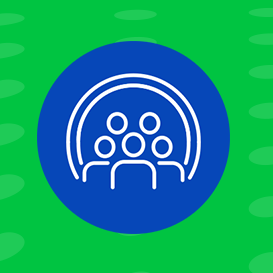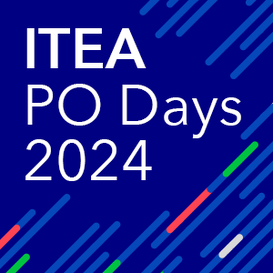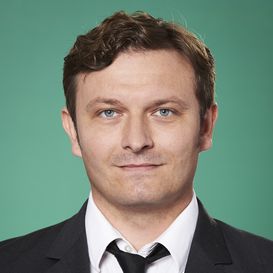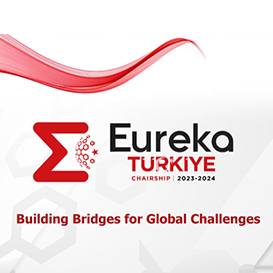
Inclusivity and diversity driving innovation in the ITEA Community
Insights from the VMAP project
In the past decade, we have learned a lot on how including diverse perspectives boosts innovation and results. As underscored in McKinsey & Company’s May 2020 study titled ‘Diversity Wins – How Inclusion Matters’, half a decade of their research consistently demonstrates a positive correlation between financial outperformance of a company and diversity on the dimensions of both gender and ethnicity. Notably, this correlation continues to strengthen with time.
At the heart of diversity is the cultivation of equality, openness, and a sense of belonging. These fundamental principles are also important in the ITEA Community, often referred to as the ITEA Family. The term ‘family’ conveys notions of inclusivity, support, and connection. Within the ITEA Community, innovative ideas thrive in an open and familial culture; individuals of different nationalities, cultures, levels of experience, and backgrounds come together, stimulating each other to create impactful innovations.
Exemplifying this commitment to diversity is the ITEA project VMAP (2017-2020), which united six different countries, a wide range of backgrounds, and various other aspects of diversity. We invited project leaders Klaus Wolf and Priyanka Gulati of Fraunhofer to share how inclusivity and diversity drove innovation and contributed to their project and beyond.
The origins of VMAP

As the largest public research organisation in Europe, comprising 76 institutes across Germany, Fraunhofer has taken part in dozens of ITEA projects since the very first Call. Klaus and Priyanka belong to the Fraunhofer Institute for Algorithms and Scientific Computing (SCAI), which focuses on mathematics and IT software for a variety of engineering fields. “We are more like a software company, so we are a typical partner for many ITEA projects,” begins Klaus. “That’s one reason that we initiated the VMAP project. We provide interface solutions to connect different software tools together but did not have a standard before VMAP. On our side, we had enough pain knowing what interfacing means, so that was the kick-off to say that we should try a standard. And that’s how it started some eight years ago.”
The project was an enormous success, resulting in the first ever open, vendor-neutral standard for computer-aided engineering data storage to enhance the interoperability of software tools. This would not have been possible without a connection between the world of software and the physical manufacturing environments of end-users, which was where Priyanka stepped in. “I’m a mechanical engineer and I had worked mostly in computational engineering until then. When I joined, VMAP had been running for almost a year. After three months, I was made a work package leader, where I was then responsible for talking to the software and industry partners to translate the requirements from the mechanical side to the software side. It was a very big step for me because I came from being just an engineer to talking to 15 software vendors from all over the world and delegating work, so it was quite an interesting opportunity.”
Establishing respect

At the heart of diversity is the cultivation of equality, openness, and a sense of belonging.
In one sense, ITEA projects are always diverse: consortia draw partners from at least two participating countries, requiring the navigation of different languages, cultures and working methods. VMAP was no exception, and Klaus and Priyanka agree that this challenge ultimately brought major benefits.
“Even in the regions of Germany, people have different ways of talking to each other,” Klaus notes. “Now, we had people coming from Germany, Canada, Belgium, the Netherlands, Switzerland, and Austria, all with different personal backgrounds. We had some who were really direct in their speech and others who took some time to get their ideas across. This was a challenge, but it was also a plus for the project because the goal was to establish a standard that would need to be accepted by many different people and engineering communities. You need to find compromise for that, so we should listen to the human side and transfer this to the technical side.”
Crucial to this was a structured and diplomatic environment, which Priyanka sought to establish in all project meetings. “I did a lot of homework before I went into these meetings, so I was prepared and neutral. I never took sides, even when I knew there would be conflict or that everybody would have a different opinion. When we saw there were more than two opinions with very strong, intense feelings, we would just take a poll. Everybody had two or three weeks to answer, and it was a democratic decision that we went ahead with. Very often, there was also an agenda plan and I adhered to the timelines, so I respected everybody’s time. And I knew that I didn’t know everything, so I would ask in the meetings if there were better ways to do things. This brought a lot of respect to me and to what I was working on.”
An open approach
As an example of these processes in action, Priyanka looks to the challenge of COVID-19, which affected the end of the project and prevented a final demonstrator from taking place in the Netherlands. The solution lay in online video demonstrators, an idea that she attributes to giving space to more creatively-oriented engineers to speak up.
“What I’ve learned is that it’s good to have people from different backgrounds because diverse opinions help you to think from different perspectives instead of just one focus that might work in a case, country or domain but not when somebody else wants to use it,” Priyanka continues. “One thing that becomes really important with diversity is the fact that the project proposal is written before the project is approved. But as the project progresses, there are always unforeseen changes – like corona. You actually need differences of opinion instead of just a few people with a small mindset saying, ‘No, we will finish it the old way’. That’s a closed approach that is not helpful for the project.”
“Any new project should definitely be open-minded and let people in,” agrees Klaus. “When I started to find supporters for the project, I looked in my own address book. I was maybe not narrow-minded, but not too wide-minded either. But then I found a partner in the Netherlands that brought a lot of friends, so the community grew. That was good. If only I had selected the partners, it probably would not have worked out because I didn’t know most of those partners before. And if you compare ITEA projects to other European ones, many other projects stick to work packages and tasks defined one year before the real work starts. ITEA is much more flexible. They accept good reasons for changes, which is a positive reaction to the input coming from all these diverse opinions. It opens the mind towards different ideas on how to solve a problem. It’s a challenge, but also a chance.”
Success story
This was a chance that paid off for VMAP, which would go on to win the ITEA Award of Excellence for Standardisation in 2021. Most important, however, was the establishment of the VMAP Standards Community as a registered association by the majority of the consortium. Within this, the partners push for the further standardisation of VMAP’s results in a non-profit manner due to their unwavering belief in the project’s long-term benefits. “There’s a friendly commodity between us now,” says Priyanka. “Even if you write them an email just for marketing purposes, you get a nice hello from everyone. So, there’s a community and, for future projects, it isn’t difficult to contact them because we are already connected.”
Klaus also considers the project’s success from a political dimension, serving as a counterargument to the rise of anti-immigration parties in Germany and the Netherlands. “If we were limited to those who are just native German or Dutch people and we didn’t want anybody else, we wouldn’t have Priyanka on board, for example. We need to show that very skilled people come from all over the world and can work closely together without any problems. I would like to see this visualised by ITEA, such as by highlighting personal backgrounds on the website or in interviews. I would like people to know that ITEA is open to anybody who wants to join from any technical discipline and from its regions. I cannot see any limits.”
The gender gap

I would like people to know that ITEA is open to anybody who wants to join from any technical discipline and from its regions.
Nonetheless, there is room for improvement. In spite of VMAP’s diversity in cultural backgrounds, both Priyanka and Klaus are conscious of a lack of gender equality. “There were only two or three women, including Priyanka,” admits Klaus. “But my perspective after a long time in the software business is that 95% of people are (old) white men. It was really helpful to have Priyanka to give me a different perspective: a young woman trying to convince older, experienced software engineers to follow her organisation. It took one or two meetings, but then they fully respected her. Thanks again, Priyanka!”
As for raising the number of women in technology in general, Fraunhofer already operates a range of schemes and policies, including a day in which girls can visit them to build an interest in science from an early age. The internal TALENTA programme is another key element, aiming to recruit more women to applied research and to develop their soft and technical skills with courses and qualifications. This is open even to women on fixed-term contracts, who may then take their skills to a higher position elsewhere. While Fraunhofer aims to retain such talent, it also recognises the benefits that this can have in bringing ever more talented women into the innovation ecosystem as a whole.
Inspiration from ITEA
Such efforts to boost gender diversity are a longterm endeavour in which ITEA also has a role to play. “Recently, I went through the ITEA website and saw only one project with a woman leader out of about 24 on the first page. I think that this is because the companies themselves do not have women in these roles who are able to manage the projects,” Priyanka explains. “To help with this, I think that the most inspiring thing that ITEA did was to have a woman chairperson, Zeynep Sarılar. I spoke to her once personally when she came for a review and it was a very interesting conversation. It was short, but it was very inspiring. This kind of representation is important. If ITEA has a woman representative, then other women may see and be inspired to join projects.”
Klaus nods. “Currently, we list the country flags and the diversity of engineering fields, but it might be possible to show more detail. If there is a woman working at a high level anywhere in the ITEA Community, it would be beneficial to highlight this as much as possible. And it makes sense to have more interviews during the project – not just at the end – to let more people know about how diversity works in it.”
“For women in tech, I have one last piece of advice: be assertive,” Priyanka concludes. “When you speak about the skills you’ve gathered in the past, be confident about them. Very often, women come with the assumption that they will be treated differently, but often it’s not true.”
More information:
https://itea4.org/project/vmap.html
https://www.fraunhofer.de/

Other chapters
Use the arrows to view more chapters

Editorial
By Zeynep Sarılar

Country Focus: Finland
Software enabled digital transformation

Bittium
Where R&D is fundamental to business impact

ITEA Success story: CyberFactory#1
Addressing opportunities and threats for the Factory of the Future

Inclusivity and diversity driving innovation in the ITEA Community
Insights from the VMAP project

ITEA PO Days 2024 & Exhibition
Spark the next ground-breaking innovation!

Community Talk with Alexander Viehl
Motivated by real-life challenges and impactful solutions

SME in the Spotlight: RaySearch Laboratories
Bringing machine learning to radiation therapy

ITEA Topical roadshow
Your voice, your topics, inspiring the ITEA Community

ITEA Success story: PAPUD
A unified approach to heterogenous data

Labelled ITEA Call 2023 projects
Strong focus on Healthcare and generative AI

End user happiness: VMAP analytics
Energy-saving furnace control enhances sustainability and quality in the steel industry

Global Innovation Summit 2024
Building bridges for global challenges

